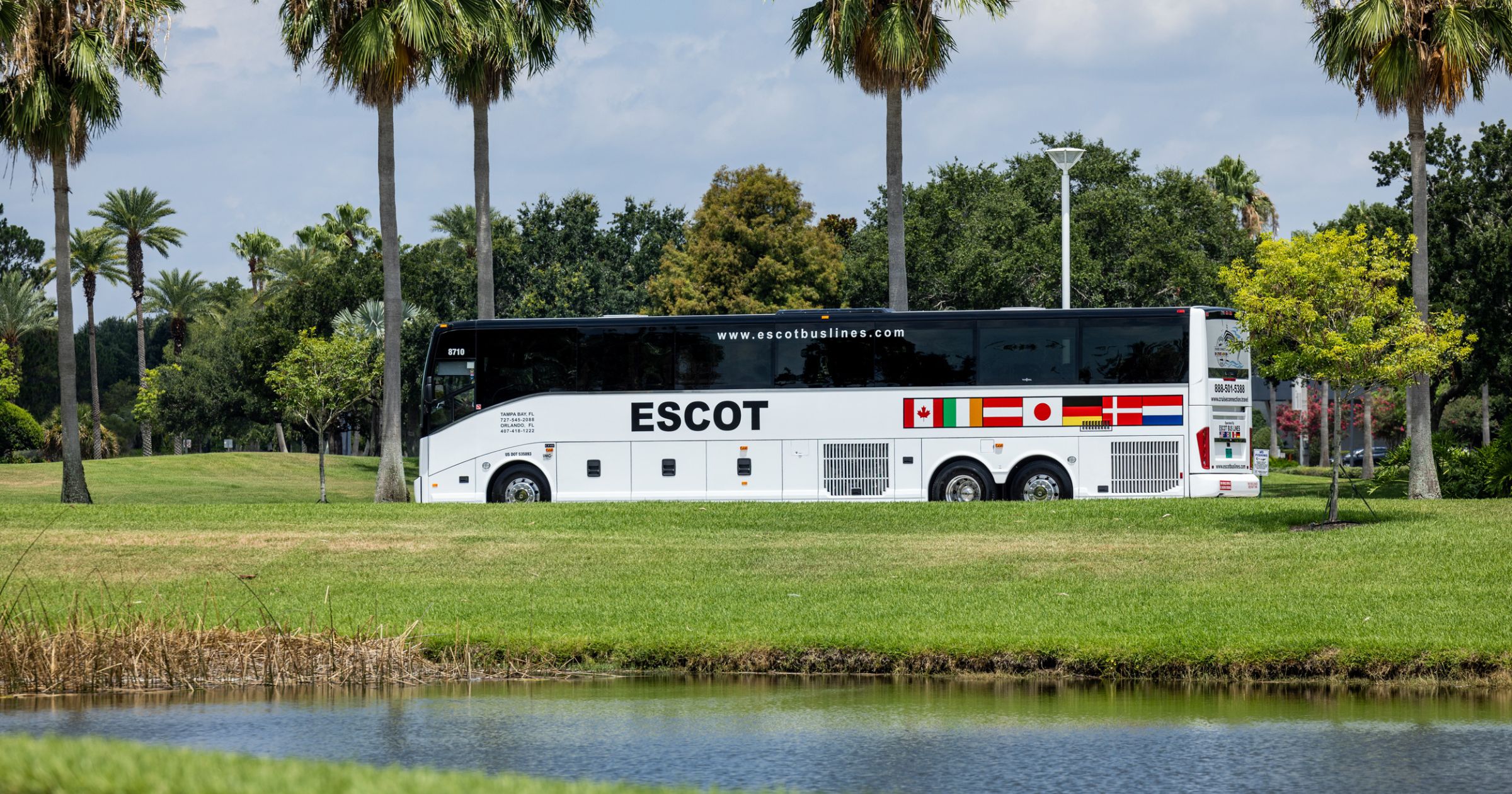Motorcoaches are the most popular and cost-effective way for student groups to get around, with a wide array of customization options.
They’re unique in the choices you have, compared to something like flying or even a city bus, where you’re entering a shared space with other travelers. To help traveling educators understand the ins and outs of motorcoaches, from safety to accessibility and sustainability, the 2023 SYTA Conference hosted Terry Fischer, President of TCS & Polynesian Adventure Tours, and Brent Maitland, VP of Private Sector Sales and Marketing for Motor Coach Industries (MCI).
Here are the top takeaways from Getting to Know the Motorcoach.
Typical Features
» 56 Passengers
» Forward-facing seats with a few inches recline
» Overhead parcel racks
» Underfloor luggage bays
» 4-6 video monitors
» Top speed limited to 72 MPH
» Safety features: Seat belts, ESC, ABS and more
Common Options
» Wheelchair lift
» Wi-fi
» Seat outlets
» Seat trays
» Media panel for tour guide
» Advanced Driver Assistance Systems (additional radar, cameras and monitoring systems)
Safety
In terms of safety, not all coach operators are the same. The majority of bus operators are responsible and operate safely, but to be safe, you can check in with the Federal Motor Carrier Safety Administration (FMCSA) to find information on motorcoach companies’ safety ratings. You can also ask the company for their proof of insurance, safety information, and what GPS is used (advanced onboard systems may be preferred to personal cellphones). Another resource is the International Motorcoach Group.
That said, statistics show that traveling by bus is safer than most other methods—except plane—with 0.11 passenger deaths per 1 billion passenger miles from 2000 to 2009. That’s compared to 7.28 deaths per billion miles for cars, and .43 for trains. In other words, a motorcoach is approximately 66 times safer than a car.
Pricing
From the owners’ financial perspective, they’re responsible for the coach itself, the drivers, insurance, fuel and maintenance. High inflation and supply chain challenges impacted material costs for coaches quite a bit, leading to more expensive vehicles. However, this is true for other methods of transportation as well.
Efficiency & Sustainability
While motorcoaches have lower fuel mileage than the average car, the number of passengers more than makes up for it, along with regulations around emissions. For example, one Tesla has 134 MPG, but will only hold a couple people. Meanwhile, a passenger coach may have 7 MPG, but will carry 56 people. That translates to 392 passenger miles per gallon with the coach, versus 268 passenger miles per gallon with the Tesla. Plus, motorcoaches reduce congestion by saving a whole lot of space on the road—imagine 56 or even 28 cars, compared to one coach.
Companies are also making the transition to electric over time, but it’s a complex issue. Current zero-emission products cost approximately twice as much as combustion engines, with $1.2M for a battery electric coach versus $600K for a diesel coach. Diesel also offers a range of 800-plus miles, versus just 200-300 for electric. Not to mention the fact charging takes longer than filling up, and batteries take up baggage space.
The bright side is that the technology is improving and the motorcoach industry is definitely moving toward zero-emission and “clean diesel.” As we progress, the downsides will decrease and the upsides will increase, but you can rest easy knowing even today’s least efficient motorcoach is better for the environment and sustainable tourism than the most common modes of transportation.
This story originally appeared in the January 2024 issue of Teach & Travel.





